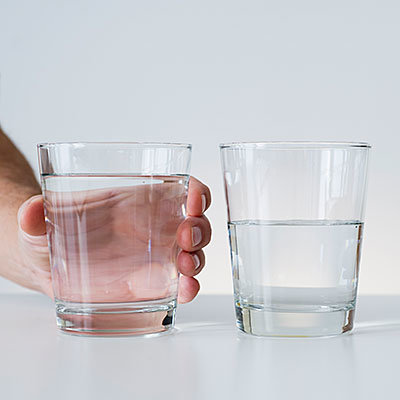Strength Training And Weight Loss
So you've started out on your weight loss journey. Congratulations on making the first steps. By now, you will have looked at your nutritional needs and added some sort of cardio such as walking, swimming or a fitness class to become more active. It's time now to make that daunting step into weight (or resistance) training.
There is a common fear among some people, especially women, that if they were to start weight training they will start to look like the next Arnold Schwarzenegger. Truth of the matter is, those kind of results only happen when you specifically train for them.
5 good reasons to add a weight training program to your exercise program:
* It strengthens weakened joints, making them more stable and less injury-prone
* It not only works the muscles - it also strengthens bones
* Results are fast - regardless of age & sex. Your strength can increase by up to 72% in the first 4 weeks
* It not only improves the overall tone of your body, it will also improve your posture - which will help in making you look slimmer
* It helps to burn kJ faster. Lean muscle tissue is 17-25 times more active than fat. This means you will burn more kJ even at rest! By adding 1-2kg of muscle to your body - you'll burn an extra 290-418kJ a day
When you first start a weight program, don't be disheartened if you gain a couple of kilos. It is often said that Lean Muscle Tissue weighs more than fat. Do not listen to this hype. 1kg of fat weighs the same as 1kg of muscle ? muscle tissue is more toned and compact than fat so you will start to look much slimmer.
If the scales are not moving, don't despair. Weighing yourself is not your only means of tracking you progress. Several other ways exist to help keep track of your progress and find out if your gain is muscle or fat.
* Measure yourself. Get out a tape measure and measure various parts of your body - common areas to include are hips, waist, thighs [mid and top], bust/chest, arms, calves & stomach. You won't need to measure yourself every week - once every 4 weeks is usually best, as you won't see much of a difference on a week-to-week basis.
* Use an article of clothing to help measure your progress. That pair of jeans or skirt that is a little tight is perfect.
If you know absolutely nothing about weights and their proper use it is best to visit your local gym and see the staff there. They will show you exactly what to do and even draw up a program for you if you wish. If you are at school, visit your PE department and ask one of your teachers to help you out. Most high schools have their own weights area for student use. They can show you what you need to do, how to do it and help you keep track of your progress.
If seeing someone or exercising with someone is intimidating for you (or you don't have the money for the gym) you could try an 'at home' video or DVD. You will need to buy some free weights (dumbbells or barbells) check out the program before you buy any equipment. A couple of things to remember if you go this option:
* Watch the video before you actually start participating. This way you can see what you will be doing and the equipment needed to participate.
* Make sure the instructors give a "beginners option". This means there should be someone in the group using no weights - follow them until you are comfortable and confident with the program to add weights. In addition, there should be a section at the beginning of the video (or DVD menu) the focus on showing you the proper form and technique of the lifts required.
* When you first start using the weights, if at anytime, the weights become too heavy for you, STOP. Change to a smaller weight or revert to the beginners? option. The old saying "No pain, no gain" is completely outdated - you can do more damage then good. Listen to your body, it'll tell you if it isn't coping.
* Another point to keep in mind - the video/DVD should have a cardio/warm-up section at the start - this is important because you shouldn't start a weights session with cold muscles. A warm-up should last between 5-15mins and include gentle aerobic activity. Some programs alternate between cardio and weights workouts but it is important that the starting warm-up gets the heart beating. If you don't feel that it is good enough or you want to make sure you warming up properly - go for a walk [15mins minimum] before you start the session.
* On that same note, make sure that the video/DVD has a "cool down" at the end of the session. This can include a number of things, most usually include mini Pilates/Yoga like sessions at the end to stretch out the muscle groups.
* Aim for good technique when every time. Don't try to keep up with the instructors. If you need to take a break or slow a section down then do it. You want to get healthy not injured!
Weights not your thing? Going on holiday?
Try using resistance bands. These bands are usually used by people in rehab or older people who can't lift weights. They give the same kind of workout as actual weights but they tend to be a little easier on you.
The added bonus with resistance bands is that if you go away for a holiday or for the weekend to visit family, etc they are easy to pack into your bag so you don't have to miss out on your workouts. They also weigh less and don't take up much space in the suitcase. Add in a daily walk or swim and you've got your cardio covered as well, so there's no need to 'slack off' while abroad.
-
7 Day Belly Blast Diet Review
Fitness trainer Josh Bezoni has just released his 7 Day Belly Blast Di
-
Do Certain Food Really Help You Burn Fat?
The claims are all aroun
-
Learn about dietary fats
Fat has earned a bad reputation. When people hear the word “f
-
Losing Weight by Boosting Metabolism
Are your weight loss diets failing time
-
Smoking Makes You Fat?
How many smokers keep smoking because they think they’ll pack
-
Why A Good Weight Loss Program Should Include Green Tea
The concept of green tea being good as an aid to weight loss, has b
- DON'T MISS
- 4 Ways Your Hormones Can Help You Reach Your Weight Loss Goals
- Proper Nutrition And Regular Exercise For Weight Loss
- Postpartum Weight Loss - Calculators Can Help You Plan The Right Goals
- Great Info About The South Beach Diet
- Diet Pills Known As Fat Burners
- Weight loss Questions – Stomach fat and Diet
- Under the Knife
- Preparing for Weight Loss
- 7 Ways To Stop Negativity And Boost Self-Worth
- Side effects of green tea pills for weight loss




